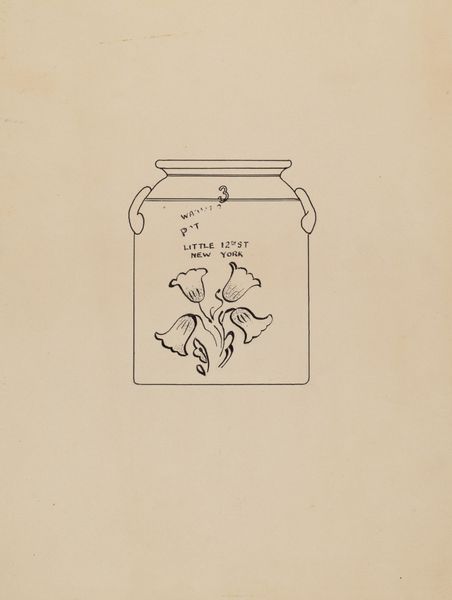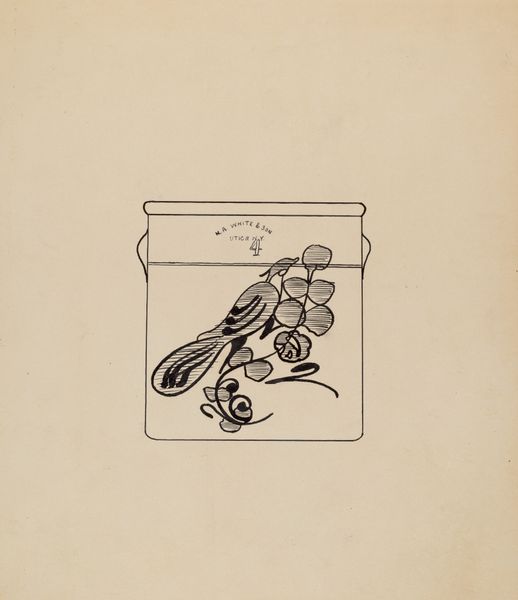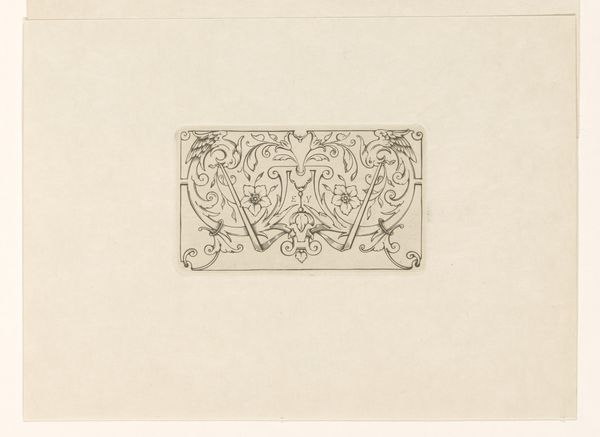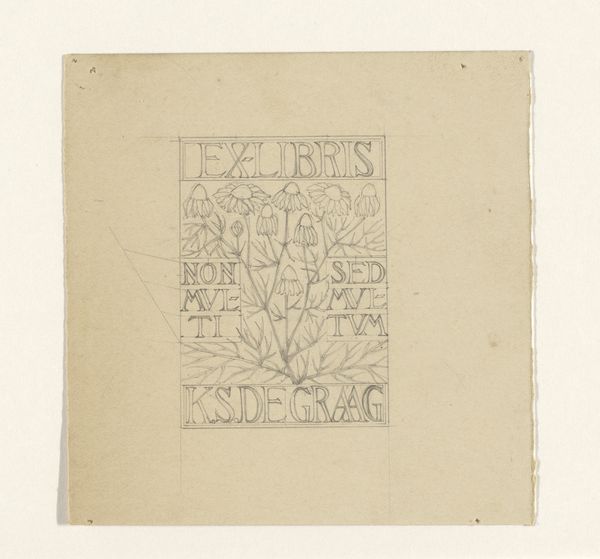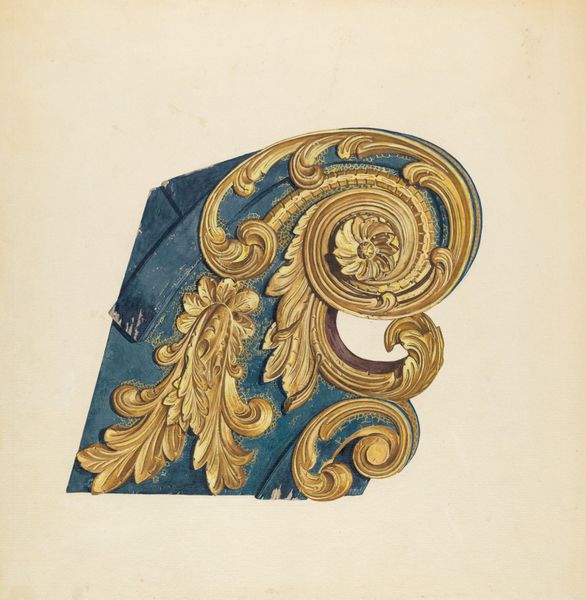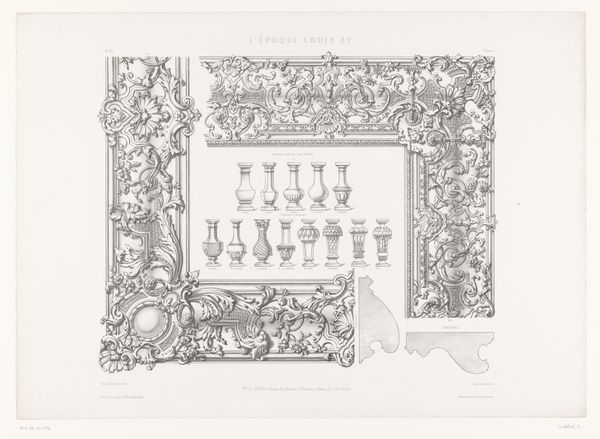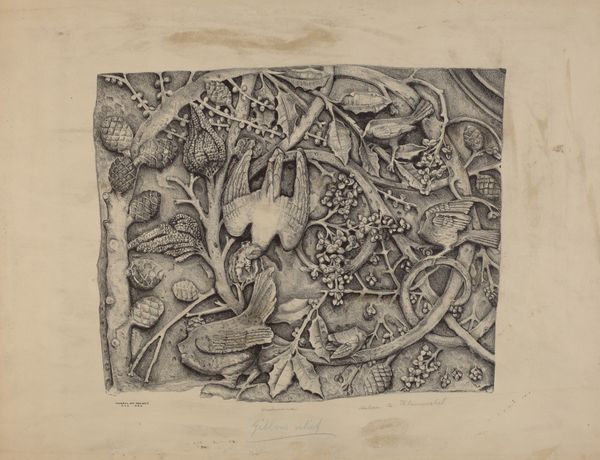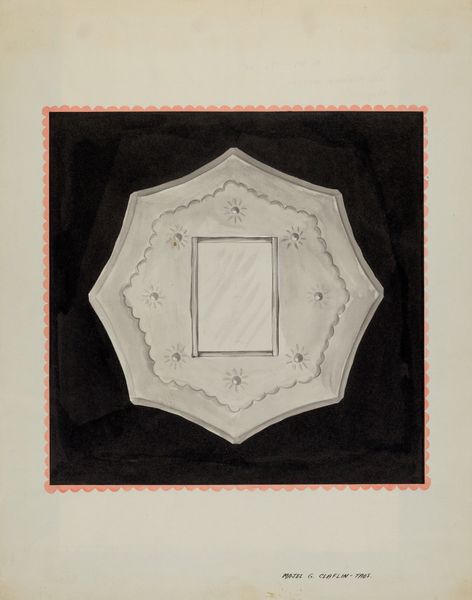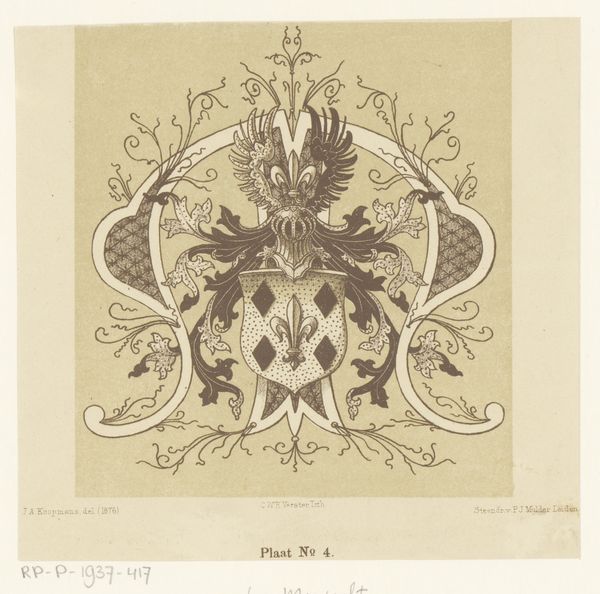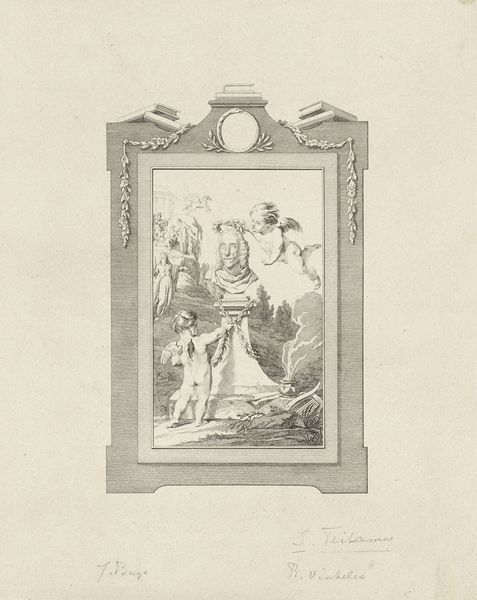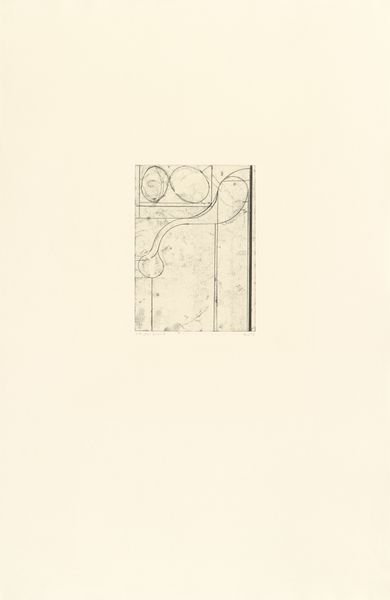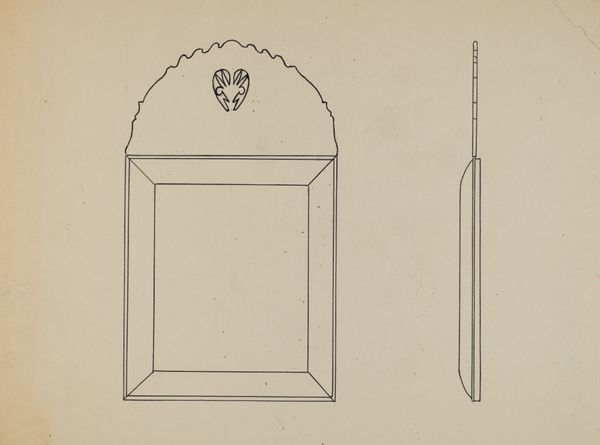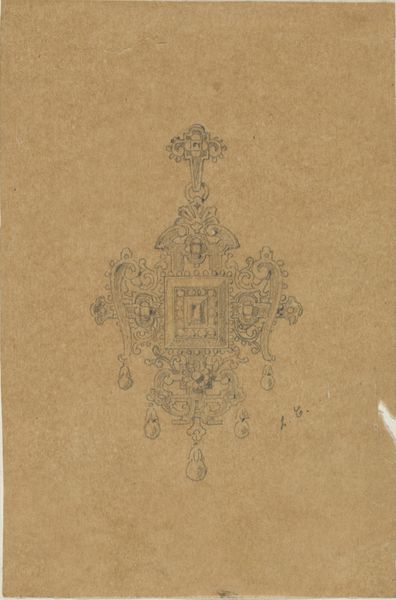
drawing, ink
#
drawing
#
light pencil work
#
blue ink drawing
#
shading to add clarity
#
old engraving style
#
personal sketchbook
#
ink
#
ink drawing experimentation
#
pen-ink sketch
#
line
#
sketchbook drawing
#
pencil work
#
sketchbook art
Dimensions: overall: 28.2 x 22.8 cm (11 1/8 x 9 in.) Original IAD Object: 12 1/8" High 11 3/4" Dia(base) 12 1/2" Dia(top)
Copyright: National Gallery of Art: CC0 1.0
Editor: So, this is Isadore Goldberg's "Crock" from around 1940. It's an ink drawing, and it feels very… deliberate. The lines are so clean. How would you interpret this piece? Curator: Immediately, one observes the tension created by the object’s severe geometry versus the organic nature of the applied floral design. Consider the flatness emphasized by the linear representation, contrasted against implied depth within the floral arrangement. Do you find this visual juxtaposition significant? Editor: Absolutely, the rigid container is decorated with swirling organic floral elements. The lines create an almost ethereal quality. It also uses negative space really effectively. But is there a specific name for the art on the front, maybe 'old engraving style'? Curator: Indeed. However, to focus on labeling alone would obscure a deeper appreciation of form and technique. Consider how the linework weight varies – thicker outlines defining the container's structure and thinner, delicate lines creating the floral motif. What does this differentiation communicate? Editor: It almost feels like there is a boundary or resistance to interpretation that goes deeper than medium or labeling alone. Maybe this reflects the tension or conflict between structure and natural growth, or something beyond? Curator: Precisely. We discern an interplay between industrial form and natural aesthetics, captured through controlled variation of line. An object intended for utility, adorned. Isadore Goldberg masterfully explores this dichotomy within a minimalist framework. Editor: Wow, I'm starting to appreciate the relationship between form and embellishment and, really, how a few basic art elements can evoke an amazing mood and feeling. Curator: That intersection—that critical reading—is precisely what the work demands. It prompts contemplation about what, ultimately, gives form and meaning to everyday objects.
Comments
No comments
Be the first to comment and join the conversation on the ultimate creative platform.
